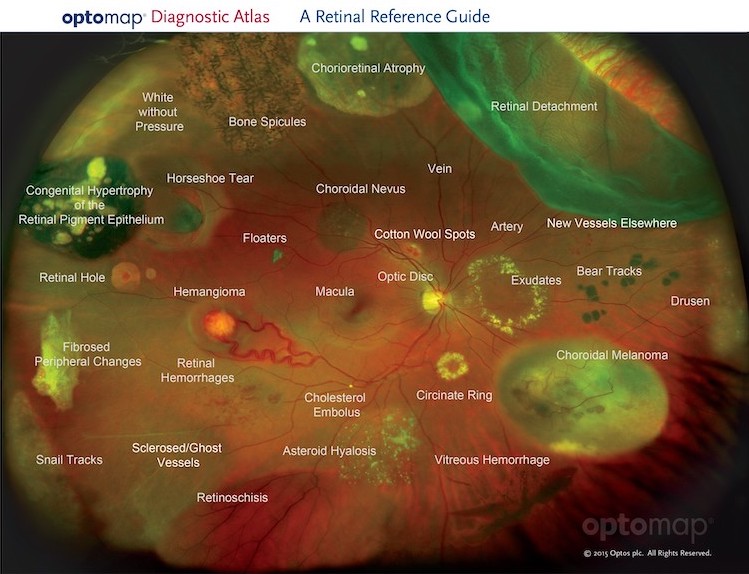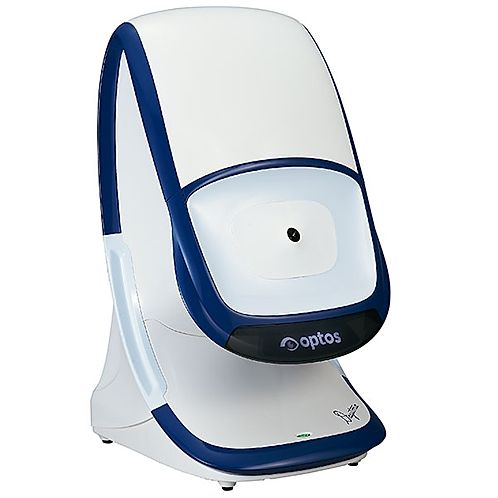Optomap®
Ultra-wide field digital retinal imaging provides early detection of eye and health conditions

Photo: Optomap view of the retina regarding the disease and pathology that can occur on the retina
Early detection of eye and health conditions is essential to reduce the risk to your sight and health. Your retina, located in the back of your eye, is the only place in the body where blood vessels can be seen directly.

This means that in addition to eye conditions that can lead to vision impairment or blindness, signs of other diseases such as stroke, heart disease, hypertension and diabetes can also beseen in the retina. And early signs of disease can be present in the periphery of your retina long before you notice any changes to your vision or feel pain, and can remain undetected for a long time when using traditional retinal imaging methods.
The Optomap® is a unique technology that captures more than 80% of your retina in one panoramic image, while traditional imaging methods typically show only 15% of your retina at one time.
